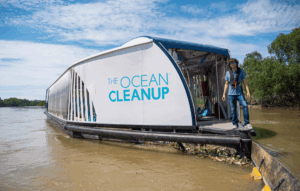We often think of classrooms as safe, structured environments. But what if they were quietly exposing children to levels of air pollution that impair their health, learning capacity, and even long-term development?
That’s the unsettling question posed—and answered—by a landmark 2025 study published in Journal of Exposure Science & Environmental Epidemiology. Conducted across 17 elementary schools in Los Angeles, the study explored the real-world impact of HEPA-filter air purifiers on indoor air quality in classrooms, and the results were hard to ignore: a nearly 40% reduction in PM2.5 levels in classrooms with portable HEPA purifiers compared to those without.
Let’s break down what this means—and why it’s time to take indoor air purification seriously.
Understanding PM2.5: Why Size Matters
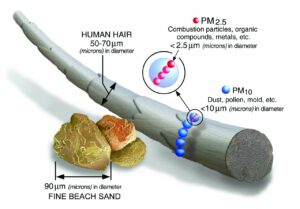 PM2.5 stands for particulate matter smaller than 2.5 microns—tiny enough to penetrate deep into lung tissue and even enter the bloodstream. These fine particles come from:
PM2.5 stands for particulate matter smaller than 2.5 microns—tiny enough to penetrate deep into lung tissue and even enter the bloodstream. These fine particles come from:
Traffic emissions
Industrial activity
Power plants
Wildfire smoke
But indoors, they can also originate from dust, cooking, cleaning agents, and even materials used in construction.
Why Is It Dangerous?
Chronic exposure to PM2.5 is linked to:
Respiratory issues (asthma, bronchitis)
Cardiovascular disease
Neurodevelopmental issues in children
Premature death
Children are especially vulnerable because they breathe more air per body weight, and their lungs are still developing.
Moreover, a study published in the journal Environmental Research found that long-term exposure to fine particulate matter in children is associated with abnormal development of brain structures, particularly the white matter, which is responsible for communication between different brain regions. This means poor air quality could be shaping children’s minds in ways we can’t always detect on the surface—until it’s too late.
The LAUSD HEPA Study: A Deep Dive
The 2025 study was motivated by health disparities in underserved communities across Los Angeles, areas more exposed to pollution due to proximity to highways, ports, and industrial zones. While schools had already upgraded HVAC systems with MERV 13 filters post-COVID, researchers wanted to know: can portable HEPA filters make a measurable difference on top of that?
This was no small feat. The study enrolled 186 classrooms across 17 schools and tracked their indoor air quality over a full school year. What makes this study particularly compelling is its robust design: a crossover format where classrooms switched from control to intervention in alternating years, accounting for seasonal variations and potential bias.
Methodology
Researchers used a block randomized crossover trial involving 186 classrooms:
99 classrooms received HEPA filters.
87 classrooms received lookalike non-HEPA filters.
All classrooms had HVAC systems with MERV 13 filters already installed. The intervention ran for an entire school year, with the classrooms swapping filter types the following year.
IQAir AirVisual Pro sensors were used to monitor PM1, PM2.5, and PM10 in real time, providing detailed insight into particulate concentration trends.
Key Findings
HEPA classrooms had 39.9% lower PM2.5 levels over the school year.
PM2.5 infiltration from outdoors was 13.8% to 82.4% lower in HEPA classrooms.
The average reduction in PM2.5 was 0.390 µg/m³, with highly significant p-values.
Even in classrooms with MERV 13 HVAC filters, the addition of portable HEPA units significantly lowered PM concentrations.
The study’s use of intention-to-treat analysis ensured that these effects weren’t inflated due to compliance issues, meaning the benefits may actually be greater when systems are consistently maintained and properly used.
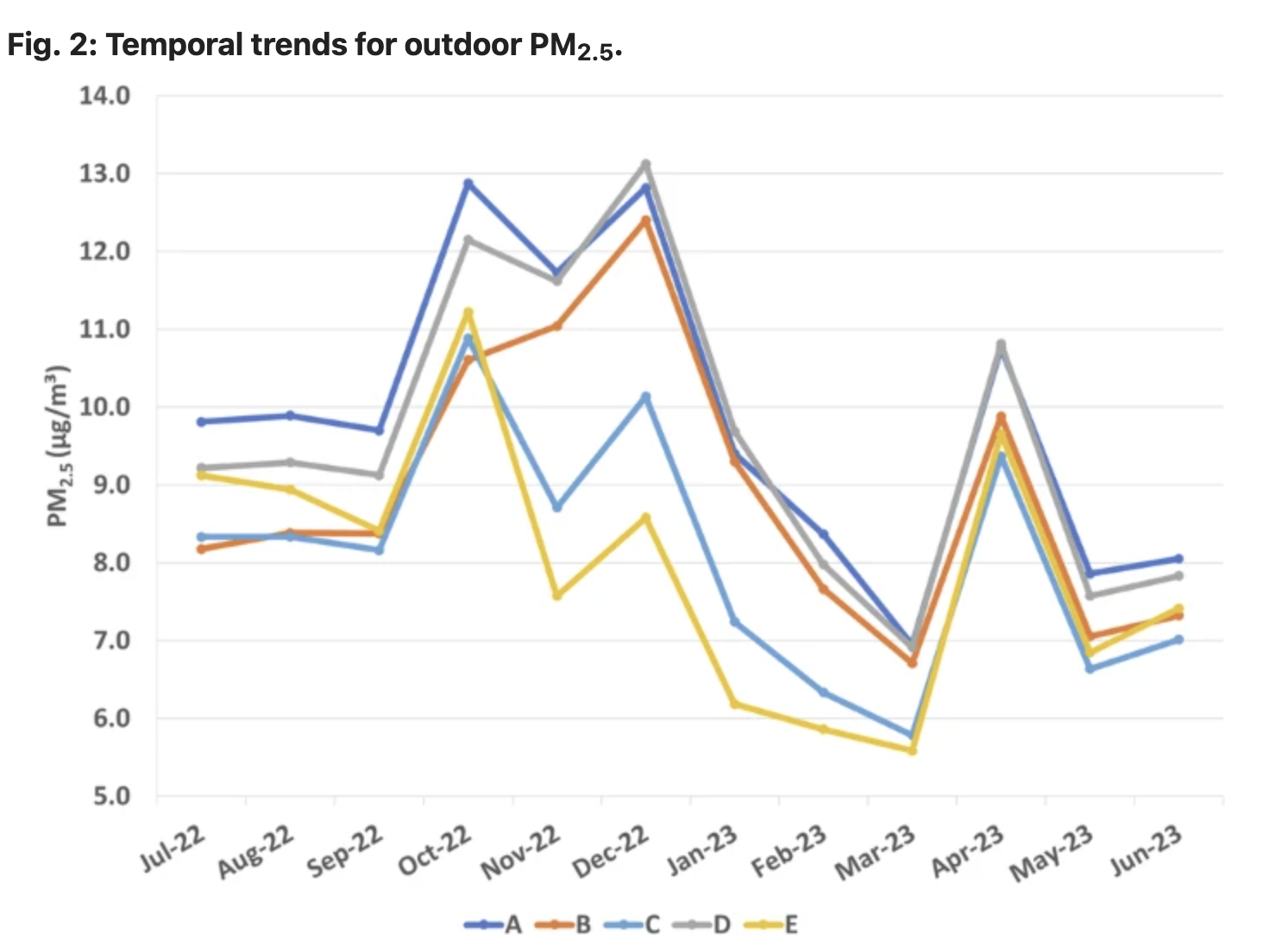

Even in relatively clean months, outdoor air (left) carried fluctuating PM2.5 loads throughout the 2022–23 school year. With HEPA filters installed, indoor classroom air (right) remained much more stable and health-protective. Source: Journal of Exposure Science & Environmental Epidemiology
Beyond the Numbers: Broader Health and Cognitive Implications
Poor indoor air quality isn’t just a lung issue—it affects how students think, learn, and retain information. A 2021 nationwide panel study found that increased levels of PM2.5, NO2, and ozone were associated with lower standardized test scores in both math and English across more than 10,000 U.S. school districts. Even modest pollution increases had statistically significant effects, equivalent to thousands of dollars in lost household income.
This means that the air children breathe in school can silently undermine their academic performance, long-term educational attainment, and socioeconomic potential.
Purification Interventions: What the Evidence Shows
A 2023 randomized, double-blind crossover trial conducted in Mengzhou, China, offers crucial insights into intervention efficacy. The study tested the effects of real versus sham air purifiers in both classroom and home settings for 105 school-aged children:
Living room purifiers reduced PM2.5 exposure by 42.3%.
Classroom purifiers alone reduced exposure by 21.3%.
Combined, they reduced total personal PM exposure by over 55%.
Notably, the study found that most PM exposure for students occurred at home, reinforcing the need for comprehensive interventions, not just school-based solutions.
Why Home + School Strategies Work
The Mengzhou study demonstrated that living room interventions had a stronger impact than those in classrooms, largely because students spent more time at home. However, classroom purification still offered meaningful reductions and may be the more cost-effective option when scaled across school districts.
Ultimately, we can’t separate school air from home air. A child’s body doesn’t reset between environments—it accumulates exposure. That’s why interventions on both fronts matter.
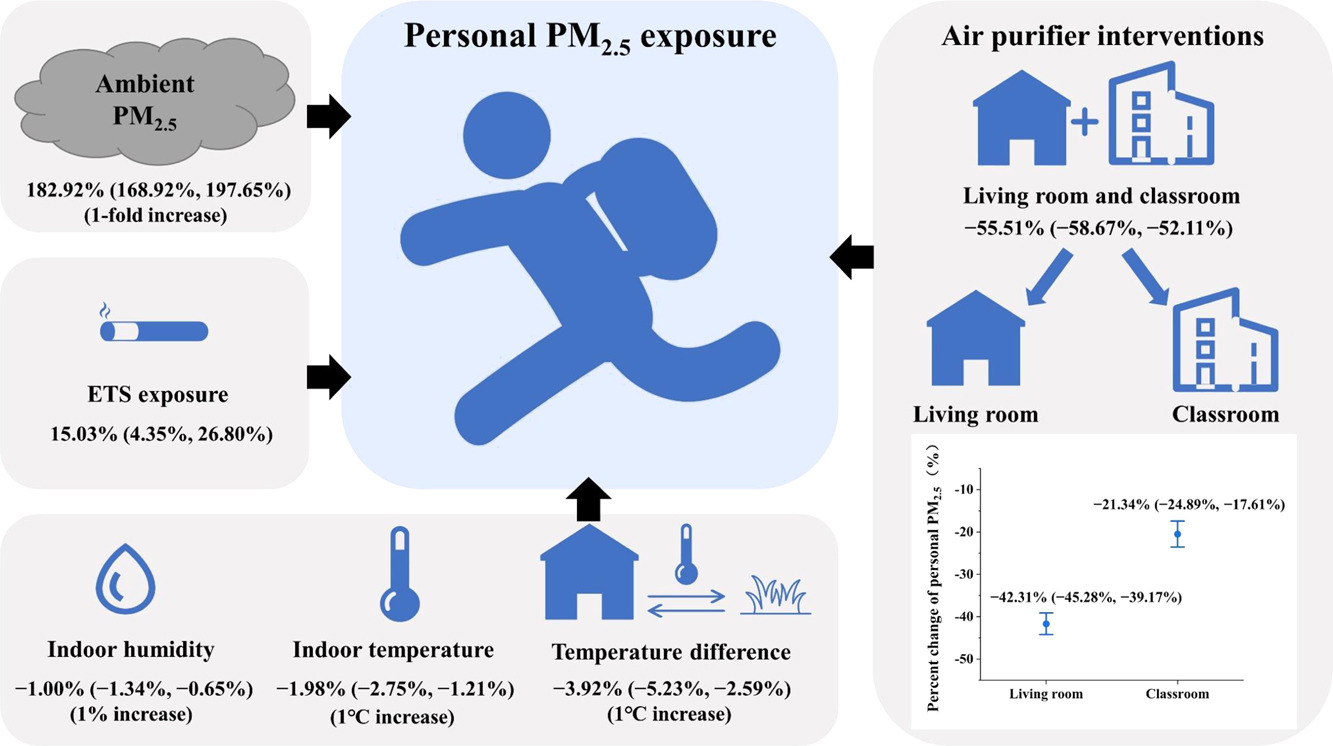
Why HVAC Alone Isn’t Enough
Yes, MERV 13 filters are a solid baseline. But they:
Focus on centralized filtration.
Often lack room-by-room responsiveness.
Cannot always offset pollution infiltration from outdoor sources.
Portable HEPA filters provide:
Localized cleaning where kids are sitting.
Redundancy in case central systems fail or are poorly maintained.
Real-time impact on indoor air quality.
Plus, they can be moved, maintained, and monitored much more easily than retrofitting old buildings with high-grade central HVAC systems.
Practical Recommendations
So what should schools, parents, and policymakers actually do with all this data? Here’s where the science meets action.
1. For Schools
Place HEPA filters in every instructional room—not just the nurse’s office.
Pair filters with real-time air monitors to gather actionable data.
Create maintenance schedules with clear replacement timelines.
Apply for state grants (like those offered under AB 617) for funding assistance.
2. For Parents
Get involved. Ask your child’s school what filters they use.
Raise awareness at PTA meetings or school board discussions.
Consider gifting a unit to your child’s classroom—many brands offer discounts for educators.
At home, run a HEPA purifier in sleeping areas.
3. Recommended Air Purifier: AirDoctor
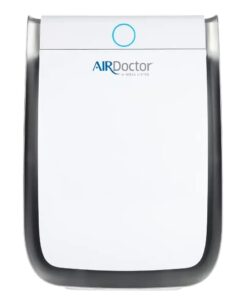 When it comes to choosing a reliable air purifier for the home, my top recommendation is AirDoctor. AirDoctor uses UltraHEPA™ filtration that’s been independently tested to remove 99.99% of airborne particles as small as 0.003 microns—including viruses, smoke, pollen, mold, and VOCs. All of their various models feature an auto-mode that adjusts fan speed based on real-time air quality and includes a built-in air quality sensor.
When it comes to choosing a reliable air purifier for the home, my top recommendation is AirDoctor. AirDoctor uses UltraHEPA™ filtration that’s been independently tested to remove 99.99% of airborne particles as small as 0.003 microns—including viruses, smoke, pollen, mold, and VOCs. All of their various models feature an auto-mode that adjusts fan speed based on real-time air quality and includes a built-in air quality sensor.
The design is sleek, the setup is user-friendly, and the performance has been consistently praised in consumer tests. In my own experience, it’s made a noticeable difference in both air clarity and allergy symptoms, especially in households with pets or kids.
If you’re looking to extend the protective benefits of clean classroom air into your home environment, AirDoctor is one of the best investments you can make
4. For Policymakers
Mandate PM2.5 monitoring in all schools.
Offer subsidies or tax credits for air purifier installation.
Make air quality transparency part of school performance metrics.
The Bigger Picture: A Public Health Imperative
The data paints a compelling picture. The air we breathe—especially in childhood—shapes our bodies, our brains, and our futures. Ignoring indoor air quality in schools, especially in environmentally burdened communities, perpetuates cycles of disadvantage.
This isn’t just an educational issue or an environmental issue—it’s a public health issue.
We can’t control every external factor, but we can create sanctuaries of clean air in our classrooms. That, at the very least, is a start.







